N-1ws #21: Two steps forward, one (big) step back
Sea Otter was full of good vibes, except for one big, ominous cloud hanging overhead
Featured in this week’s tech round-up:
These tariffs are already having very, very real consequences.
Canyon announces redesigned Spectral AL aluminum trail bikes.
Litespeed hops on the gravel suspension bandwagon.
State Bicycle Company introduces its first proper mountain bike.
Silca has a portable electric tire inflator now, too (but you probably won’t be able to get one).
Robert Axle Project’s new hidden tire plug kit looks pretty neat.
Anyone seen Dominic Toretto? Ari Bikes just had a truck stolen with a whole bunch of bikes inside.
These 3D-printed brake blocks promise to make caliper piston service hassle-free.
Subaru really is thinking of your safety.
Can you turn your Apple Watch into a bar-mounted GPS computer?
Dupli-Fit’s bike measurement system goes digital.
TL;DR review: The Ventete AH-1 inflatable helmet is a nice idea, but no dice from me.
Trade shows like last week’s Sea Otter Classic are always a good way to get a feel for how the industry is doing. While it doesn’t provide hard information like sales figures and inventory levels, simply talking to a whole bunch of people in a wide range of positions within the business is still one of the best ways to assess the general vibe.
Overall, the industry had been pretty upbeat at the start of the season. Even if the numbers hadn’t yet fully returned to normal pre-COVID levels for most, there’s been an overwhelming sense that the industry was just sick and tired of feeling sick and tired. Bikes and gear that were fully baked but intentionally delayed for months – sometimes years – waiting for more favorable conditions had been launching left and right, if only because brands were done waiting. Companies had started planning events again. People were excited about finally getting to show off their work, even if it was only in a hopefully optimistic way as if they could collectively will the recovery to happen.
Yep, the vibes were good. But then the US president announced dramatic tariffs that affected virtually every bicycle product bound for the American market. Worse yet, the tariff situation has been changing in a rapid and highly unpredictable fashion since that initial announcement.
The weather at this year’s Sea Otter Classic could hardly have been better: sunny skies, modest winds, perfect temperatures. However, the scope and uncertainty of those tariffs hung like a dark and angry cloud approaching rapidly from just over the horizon, with everyone wondering if the incoming storm would wash everything and everyone away, or if it might – hopefully – fizzle out or change direction.
Many of the conversations I had about these tariffs weren’t just people complaining about costs going up some modest amount. The import taxes (and they are taxes, which are paid by the importer, not the manufacturer) in many cases are so massive that they’re truly existential in nature, with more than a handful of brands saying they’ll go under before the end of the season if things don’t change. Such is the brutal nature of the bike industry with its often razor-thin margins, relatively high capital requirements, and little room for error.
This isn’t some hypothetical, either; we’re already seeing the impacts.
Specialized, Trek, and several other companies have announced retail price increases for US customers directly attributed to the tariffs, while other brands have either decreased shipments to the United States or paused them entirely in anticipation of lower sales volumes.
As perhaps an ominous sign of more dramatic things to come, Colorado-based brand Revel Bikes announced last week that it was ceasing operations entirely.
“Regrettably, though we have tried every avenue possible, we have exhausted all options and run out of funds to support the business,” read the communication Revel sent to all of its dealers. “This decision comes at a critical juncture for our capital requirements, and we cannot weather this one alone. Our circumstance is tough, though not unique in the market, with product delays, significant payments coming due and a very soft market. We are on the ledge and we lost our safety net as a result of continued losses with no end in sight.”
Notably, there was no mention of tariffs in the official statement, but it doesn’t take a whole lot of reading between the lines to see their influence. The bike industry has never been a great place for anyone to make a fortune, but Revel seemed to be on reasonably secure footing with a fervent fan base and a solid product range of excellent bikes that included three new releases at Sea Otter. The specter of tariffs (especially uncertain ones) isn’t just bad for consumer prices; it’s also bad for business overall, with everyone spooked to make big or continuing investments if the general economic climate looks anything but predictable.
Officially, the motivation for these extreme tariffs is to encourage the reshoring of US-based manufacturing. Sure, such measures could theoretically nudge things in that direction to some extent. However, one of the most recurring concerns industry folks relayed to me at Sea Otter was the lack of warning that the tariffs were coming, as well as lingering questions as to the stability of the situation in general. The way the tariffs were announced left almost zero time to plan or adjust, and the chaos that has followed since then has made it impossible to plan. A lot of product now subject to tariffs was either already being made or even already on the water, leaving many brands with no choice but to somehow come up with the cash up front for the charges (which, again, are almost entirely paid by US importers, not the countries of manufacture).
“If a company couldn't divert their shipments or if it was already on the water when these tariffs hit, they will absolutely push companies out of business alone,” one industry insider told me. “Not to mention if you get that product out of port there is no way to price it high enough to cover and make sense to a consumer. The storage fees are crazy, and so are the disposal fees. There are no good solutions.”
There aren’t many occasions where the bike industry makes its way into mainstream dialogue, but one interview stood out to me that US-based news outlet CNN conducted with President Donald Trump’s economic advisor, Peter Navarro, earlier this month.
“[A] guy calls my radio show yesterday from Florida,” said CNN presenter Michael Smerconish. “He sells bicycles, and he tells me, 'I get my bicycles from Taiwan and I've got 20 cartons of bicycles now overseas that I cannot afford because they're being hit with a 43 percent tariff that I will have to pay. I can't afford it. My margin isn't 43 percent. And if I do, I need to pass that on to U.S. consumers.’ What's the answer to him?”
“The answer to him is what we saw when we put on the historic China tariffs during the first term is that the people shipping product from Taiwan or China or Vietnam or wherever it's going to come are going to absorb much of that burden,” Navarro replied. “And what we're going to see is Schwinn and the other bikes which we used to buy and ride when were kids made here back in America.”
Schwinn? Schwinn???
Schwinn hasn’t produced a bike in the United States since 1991, and the company declared bankruptcy a year later. Trek hasn’t built a frame in the United States for nearly eight years.
And even Allied Cycle Works, the heralded boutique brand that initially put its stake in the ground of domestic manufacturing with a much-hyped factory in Arkansas, just recently shifted frame production overseas despite presumably having more of a pricing cushion at that pointy end of the market than more mainstream brands.
Regardless of how you view the intentions of these tariffs, there’s no debating the fact that reversing decades of steadily evolving manufacturing practices doesn’t happen overnight. New factories require piles of money and typically years to build, and even existing ones often can’t be retooled much faster or cheaper than that. Even if a brand wanted to shift production to the United States, it doesn’t happen in a matter of days.
Revel likely won’t be the last casualty from all of this. Let’s just hope the bodies don’t pile up too high.
In the news
Canyon announces redesigned Spectral AL trail bike
The spiel: Following on the heels of the revamped Spectral CF carbon fiber trail bike, Canyon has announced a more value-oriented version with TIG-welded aluminum front and rear triangles instead of the CF’s molded carbon fiber construction. The new Spectral AL otherwise carries over most of the bigger sibling’s features, including a versatile 140/150 mm of front/rear travel, a slack 64° head tube angle and steep 76.5° seat tube angle, and reach dimensions that are so long that many riders might consider going down a size (475 mm for a “medium”!).
Stock bikes are equipped with dual 29” wheels, but flip chips in the rear end will also allow for mullet setups should you so desire (XS and S-sized bikes come with dual 27.5” wheels regardless). Either way, one thing the Spectral AL omits from the CF version entirely is internal frame storage.
Canyon is offering up to three complete versions of the Spectral AL – all with excellent value as we’ve come to expect from the German consumer-direct brand – although specific build kits appear to vary by region. For example, the US-spec Spectral 5 comes with a SRAM SX Eagle 1x12 mechanical drivetrain and a rather basic RockShox 35 Silver TK fork for US$2,500, while the UK-spec Spectral 5 gets a Shimano Deore M6100 1x12 mechanical drivetrain and much nicer RockShox Lyrik for £2,150.
My take: While much of the drop-bar world seems to have abandoned good-quality aluminum bikes, I’m glad to see the more value-minded mountain bike community continuing to advance the genre. Good bikes are expensive, after all, and while carbon fiber frames are undeniably very nice, they’re hardly necessary to have a good time. I’ve actually just recently taken delivery of an aluminum Specialized Chisel Comp Evo, and I hope to have that review wrapped up sooner than later.
Of the new Canyon Spectral AL models, the middle-child Spectral 6 looks to be the pick of the litter, with a Fox Float X Performance piggyback rear shock and Fox 36 Performance Elite fork, a Shimano SLX groupset, and DT Swiss XM1900 wheels for just US$3,000 / £2,800 / AU$4,650 / £3,000 and an impressive claimed weight of just 15.46 kg (34.10 lb).
Litespeed embraces gravel suspension forks
The spiel: Looking for more signs that suspension forks are gaining a firmer foothold on gravel bikes? Litespeed has just updated the stock geometry of its Ultimate G2, Flint, and Toscano models with optional suspension-corrected front ends so fans of Fox, RockShox, Cane Creek, MRP, and other brands of gravel suspension forks will no longer have to compromise on fit and handling if they want a frame from the iconic American titanium brand.
It’s important to note that Litespeed isn’t forcing anyone’s hand on the subject here; all of those models will still be offered with more traditional geometries if someone only ever plans on riding rigid and prefers the look of a shorter carbon fiber fork. A recent blog post by the brand is careful to outline the pros and cons of gravel suspension so potential buyers can decide for themselves what makes the most sense, but there’s no change in price whichever way you choose.
My take: Absolutely no complaints here whatsoever. I’m personally a fan of gravel suspension forks for the stuff that I ride, but I also know that it doesn’t make the most sense for everyone. Kudos to Litespeed for staying on top of what’s happening out in the real world.
State Bicycle Company has something for trail riders now, too
The spiel: Value-oriented brand State Bicycle Company is at it yet again, this time with a US$1,500 steel 29er mountain bike hardtail that – as usual – promises a lot of back for the buck. The new 4130 MTB features a double-butted TIG-welded chromoly frame arranged in an impressively progressive geometry with a 65° head tube angle, relatively steep (for a hardtail) 74.4° seat tube angles, generous reach dimensions across the four-size range, and room for 29x2.6” or 27.5x3.0” tires out back despite having super short 427 mm chainstays.
The spec includes WTB i30 tubeless-compatible aluminum rims laced to sealed cartridge bearing hubs and wrapped with 29x2.4” WTB Trail Boss tubeless-compatible tires, a Microshift 1x11 mechanical drivetrain with an 11-46T cassette, and perhaps most impressive, a RockShox Psylo Silver RC suspension fork with 130 mm of travel and 35 mm-diameter aluminum stanchions. The rear dropouts are also UDH-compatible should you decide to upgrade later, too.
SBC doesn’t offer any sort of claimed weight for the new 4130 MTB, but “heavy” seems like a safe bet. Hey, State may do a pretty solid job on the value front, but you still get what you pay for.
My take: SBC is usually really good about packing an awful lot into a particular price point, but this release leaves me feeling a bit lukewarm. I generally love the zingier ride of steel frames, but that usually only applies to higher-end constructions with larger diameters and thinner walls; more basic chromoly is usually just quite a bit heavier than aluminum without delivering a big difference in feel, and it’s also unclear exactly which tubes are double butted here.
Even the spec leaves something to be desired. The 11-46T cassette isn’t as wide as I’d like to see paired with that 32T chainring, and the only available drivetrain upgrade jumps all the way to a SRAM wireless 1x12 setup for another US$500. There’s also no dropper post included, though that’s another optional upgrade for US$200. Should you tick both of those boxes, you’ve just jacked up the asking price by almost 50% and pushed the final bill well over two grand.
As much as I prefer progressive geometry like what SBC has incorporated here, I think I’d rather spend my money on a Trek Marlin 7. It’s more XC-focused than the State, the quick-release frame (sort of) and fork are less amenable to wheel upgrades down the road, and the fork definitely isn’t as nice (nor does it have as much travel). But the SRAM SX Eagle drivetrain has an extra gear and more range, the brakes are nicer, a decent dropper post is included stock, and based on prior experience with a similar Marlin model, it should offer a more complete package straight out of the box for just US$1,400.
Silca gets into the electric inflator game with new Electtrico pumps
The spiel: Ok, I’ve got good news and bad news here.
The good news is that Silca has announced two new electric tire inflators called Electtrico – one bigger, one smaller – both with motors borrowed from the drone industry for what Silca says is about 4-8 dB quieter operation (a big pet peeve of mine as many of these things are seriously and annoyingly loud). Both Electtrico models also feature press-on heads that work with both Presta or Schrader valves, plus compatibility with other threaded chucks like Silca’s own Hiro.
The full-sized Electtrico Ultimate features a built-in digital gauge with a user-adjustable pressure cutoff that can be programmed from 3-100 psi, plus a larger 700 mAh USB-C rechargeable battery that Silca claims is roughly equivalent to more than nine (presumably 16-gram) CO2 cartridges.
Alternatively, the more compact Electtrico Micro ditches the gauge and is equipped with a smaller battery that has roughly one-third the capacity of the Ultimate’s. Since it doesn’t have a gauge, Silca has instead incorporated a 72 psi cutoff to prevent blowing off a hookless road tire.
Retail price for the Electtrico Ultimate is US$159 / £149 / AU$219 / €179, while the Elettrico Micro is US$119 / AU$179 / £119 / €139.
And now for the bad news: If you’re in the United States, you probably won’t be able to get either one. Silca only brought a total of 100 early-production Electtricos into the US, and because of the tariffs I mentioned above, a mere five-day delay at the factory ended up effectively doubling the production costs for the American market.
"Due to the significant impact of current United States tariff policies on imported goods, these products are not economically viable for sale within the US market currently,” read an official statement from Silca. “This unfortunately means that Silca’s largest historical market will not have immediate access to these groundbreaking pumps. Silca remains hopeful that these trade barriers will be resolved in the future to allow US cyclists access to the Elettrico series.”
Bummer.
My take: I have mixed feelings on portable electric tire inflators. On the one hand, I’m all for the idea of doing away with disposable CO2 cartridges, many of which invariably (and often unintentionally) end up left on the side of the road or trail. Sure, the steel casings are technically recyclable even you do remember to bring them home with you, but they’re still one-time-use-only regardless.
On the other hand, electric inflators are reusable many, many times as most rechargeable batteries can undergo hundreds of charge cycles before they lose significant capacity. Smaller ones like this Electtrico Micro don’t take up any more room than a couple of CO2 cartridges, either, and yet also pack more inflation capacity.
That said, rechargeable batteries don’t hold a charge ad infinitum, and especially if you don’t get flats often, I’m a bit leery of depending on yet another electronic device to get me home if I’m by myself and in the middle of nowhere.
I haven’t yet converted to electric pumps for road or gravel use, but I’m considering it. For trail riding, though, I’m going to stick to my trusty OneUp EDC mini-pump – at least for now.
Robert Axle Project unveils stealthy tubeless plug kit
The spiel: You wouldn’t think you could build an entire brand around thru-axles, but Robert Axle Project has managed to do just that – first, by buying Old Man Mountain and incorporating axles into a dedicated mounting system for front and rear racks, and now by offering special axles with a quick-deploy tubeless plug kit.
The new Axle Plug is a straightforward fork-style tubeless plug tool that stores inside a specially made 15 mm-diameter axle. In the event of a flat, you simply yank on the tool handle (which protrudes just enough from the end of the axle) and insert the pre-loaded bacon strip into the offending puncture.
The US-made Axle Plug kit itself costs a reasonable US$34 (including five bacon strips), but it’s important to keep in mind that Robert Axle Project will only guarantee compatibility with its own axles or ones from Chris King. I can confirm it wouldn’t fit in any RockShox forks I had on hand or a Fox 34, but it seemed to install just fine in a couple of Fox 36s, so it might be good to check first (for reference, the internal diameter of the Robert Axle Project thru-axle is 8.30 mm).
My take: Successfully plugging a tubeless tire is largely dependant on being able to quickly get that plug where it needs to be, so I’m all for the idea of kits like this that can be grabbed literally within seconds. The Axle Plug doesn’t stick out from the end of the thru-axle nearly as much as I expected so I don’t anticipate rock strikes to be a big issue, either. I’d love to see a version of this tool with a Dynaplug tube instead, though – and in fact, I wish tubeless plug kits all used the same threading at the base so people could choose their preferred style of plug.
Thieves hit Ari Bikes
The spiel: Ugh. All too many of us have experienced the pain and violation of bike theft, but what happens when you multiply that by more than 100x? Ari Bikes’ director of product development and marketing, Tyler Cloward, recently posted a video on Instagram revealing that the company can unfortunately now describe that feeling firsthand.
According to Cloward, a semi-truck filled with “hundreds” of new Ari Bikes en route from southern California to the company’s headquarters in Utah was stolen – as in, yes, someone supposedly drove off with the whole rig. Included in the shipment were a whole bunch of analog and electric full-suspension mountain bikes, dirt jumpers, and road bikes.
One of the stolen bikes was recovered after it showed up at a local shop, but the whereabouts of the rest are still up in the air. The company has the serial numbers and descriptions for all of the bikes, though, so if you happen any deals for a new Ari that seem a little too good to be true, it probably is.
My take: I’ll refrain from putting into writing what I really want to say here, but let’s just leave it as bike thieves suck. Full stop.
3D printing wizard Chris Heerschap launches clever new Uniblock brake bleed blocks
The spiel: Much to my surprise when I met him in person at the recent Philly Bike Expo, Chris Heerschap does have an actual day job, and doesn’t just sit around coming up with neat ideas for 3D-printed bike tools and other widgets.
His latest creation is an updated suite of hydraulic disc brake blocks, and they could prove quite handy for anyone who has to deal with the occasional sticky piston. Heerschap has gone with a modular setup this time with removable pucks held in place with embedded magnets. You can use the blocks with all the pucks in place if you’re just doing a straightforward bleed, or you can remove them individually if you’re trying to service a single problematic piston that could use a bit of cleaning and re-lubing.
The magnets are a nice touch for sure, but even better is the fact each puck is tethered to the main block so you don’t have to keep track of it separately (which is especially important if your workbench looks anything like mine).
The blocks are available for US$15 each at Heerschap’s Etsy store.
My take: I’ve used – and purchased – a bunch of Heerschap’s creations in the past, and haven’t been disappointed yet (including with the Pop-Tart hard case I asked him to develop a few months ago, which has already faithfully accompanied me on many a mountain bike ride). He doesn’t bill himself as some sort of master mechanic, but he does work with a number of pro wrenches who provide him with all sorts of useful feedback that clearly makes its way into the final product. Heerschap doesn’t even charge much for what he sells – and certainly not as much as he could.
My local riding conditions are typically very dry and dusty, and so sticky pistons are a pretty common occurrence. I’ll be adding a some of these to my personal collection sooner than later.
Subaru has cyclist safety in mind
The spiel: I don’t normally expect much from the automotive industry when it comes to cyclist safety, but a recent development from Subaru gives me a bit of hope.
According to a report in The Drive, a new airbag developed by Subaru for use in its popular Forester model was recently approved for its home Japanese market – only this one is designed to protect people outside the vehicle, not inside of it. Once deployed, the new U-shaped airbag covers much of the lower half of the windshield as well as both A-pillars to help prevent bodily injury in the event the driver hits a cyclist with their car.
My take: When it comes to safety on the road, I’d much rather automakers (and legislators) focus on ways to keep drivers’ attention on the road. A novel airbag is nice and all, but imagine if there was something that prevented drivers from staring at their phones when they’re behind the wheel instead! I suppose Subaru’s new airbag is better nothing, though, and given the realities behind changing human behavior, I guess I’m moderately happy to see any sort of effort being made here. Stay safe out there, folks.
Oh, and the mention in that article from The Drive about how, “the best way to stay safe on a bike is to wear a helmet,” is absolute horseshit. The best way to stay safe on a bike isn’t to wear a helmet; that responsibility falls on the shoulders of the driver behind the wheel, not the vulnerable road user they shouldn’t be running down (inadvertently or otherwise) in the first place.
The Performance Design Works Magneto case lets you use your Apple Watch as a bar-mounted GPS computer
The spiel: Upstart brand Performance Design Works has unveiled a neat device that allows Apple Watch wearers to attach the device right on any Garmin-style quarter-turn mount.
“I started this project after my Garmin 530 of six years would only hold a charge for a couple rides and frustration with its user interface,” PDW founder Pete Dy told me. “I’ve had an Apple Watch since Series 0 and have always been a fan of the design. When Apple released power meter support in watchOS 10, I was intrigued by the possibility of using the Apple Watch as a cycling computer only to find that it’s not practical to have this data on your wrist. I recently picked up an Apple Watch Ultra 2 and wanted to use it as a dedicated cycling computer. I wasn’t able to find an elegant solution to mounting it on your stem or handlebar, so I decided to make my own and two months later came up with the Magneto Ultra case.”
The Magneto Ultra case is a 3D-printed two-piece clamshell design, using (as the name suggests) an array of eight neodymium magnets to hold everything together. Four of those magnets also work as reinforcing pins to provide more structural support to the assembly.
“I haven’t actually crashed with the case but I’ve forcefully thrown it onto the ground and against a wall and it held together with no issues,” Dy said. “I’ve been testing the design over the last month on rough teeth-chattering mountain bike descents and crashing over potholes on my road bike. I’m super happy with the design, and to be honest with you, I didn’t think it would be as good as it is. I’m not sure why, but there’s something about having a smaller screen out in front of you instead of a big clunky computer that the big brands are pushing nowadays.”
PDW only has a version to fit the Apple Watch Ultra for now, but cases for other Apple Watch versions are pending. Retail price is US$24.
My take: I often use a GPS watch instead of a traditional computer, but I don’t always like wearing a watch while mountain biking and I also still like to have some data more in my line of sight so I find this idea intriguing – especially since Garmin discontinued its tiny Edge 130 model a few years ago.
I can only go by the supplied images for now, but while this idea sounds promising, the aesthetics are a little more rudimentary than I’d like. And while Dy is pretty confident about how this will hold up in a crash (“The magnets provide over 8 lb of securing force, which is over 60x the weight of the watch”), magnetic force has this curious trait of falling off a cliff with increasing distance. In other words, if the case does impact something directly in a crash such that the top is pried up even a little bit, there’s a chance all bets are off.
Granted, that’s just speculation from afar since I don’t actually have one of these in hand, but maybe I should get one in. I’ve been looking for an excuse to get an Apple Watch Ultra, anyway.
Dupli-Fit goes digital
The spiel: Remember the novel 3D-printed Dupli-Fit bike measurement tool from Arch Design Works I showed you a couple of months ago? Well, company president Dave Archer took my concerns to heart with some notable updates as the new Dupli-Fit Pro replaces the standard version’s analog inclinometer with an easier-to-read digital one. Archer has also developed a free Microsoft Excel-based app that will take either Dupli-Fit model’s polar coordinates and translate them into X/Y-style Cartesian ones, which tend to be more widely used (and are easier for most folks to understand).
Retail price for the Dupli-Fit Pro is US$99, which is understandably US$10 more than the standard version. However, Archer decided to drop the price of that standard analog version to US$79 to create a little more space between the two.
My take: While I still have some misgivings about the Dupli-Fit design itself, the new Pro version (plus the new app) should cancel out my two biggest ones. Even with the digital upgrade, the Dupli-Fit Pro is still within reach of mere mortals financially, and the fact Archer has responded so quickly to concerns from his customers is encouraging.
Keep on keepin’ on, small inventors. The whole industry gets better because of you.
TL;DR review: Ventete AH-1 helmet
I mentioned way back in my second-ever newsletter that I’d brought that wacky Ventete AH-1 helmet in for a review, and I’m finally ready to reveal my findings. Better late than never?
First, a quick recap of what this thing is.
The AH-1 is targeted at commuters, with an accordion-like design that folds completely flat when deflated to easily stash in a backpack or briefcase, but then expands to form a CE-approved helmet when inflated to the proper pressure. It’s very expensive at £350 and also quite heavy at 464 g (actual weight) for my medium-sized sample, but it’s also better than I’d expected it to be.
The folding nature proved surprisingly handy, most recently when I traveled with it to the Sea Otter Classic. I knew I’d be borrowing a bike there to commute to and from the show (thanks for the loaner, Tern!), but traditional bike helmets are bulky, and so it was nice how the Ventete took up so little room in my suitcase. I inflated it once I was on the ground with the included miniFumpa electric pump and didn’t think about it again for the next three days.
Despite the lack of obvious venting, airflow was actually pretty good. The AH-1 comprises a series of flat plastic pieces with inflatable bladders in the middle of each one, and the design naturally creates a whole bunch of internal channels that run the full length of the helmet. Air readily enters the inside of the helmet through the lower forward edge (and the two small forward vents), tangibly flows through and across the interior, and then exits through the lower rear edge. I certainly wouldn’t want to use this as a regular lid on a slow and steep climb, but my head was actually downright cold during those misty morning commutes in California.
The AH-1 is also more comfortable than I’d anticipated. Ventete has done an excellent job with the minimal harness, incorporating both circumference and height adjustments with just a series of tiny Velcro tabs. It took a bit of fiddling initially to get it right, butI didn’t need to touch it again – something I can’t say about more than a few conventional helmets I’ve used over the years.
But while the Ventete largely succeeds at its core mission, I don’t think the modest convenience is enough to offset the rather long list of downsides.
For one, Ventete may have done a good job on the harness, but other comfort aspects leave a lot to be desired. The folding design precludes the use of conventional padding, so Ventete has lined the inside of those hard plastic edges with strips of Rheon rate-sensitive polymer. They’re softer than the plastic ribs underneath, but they’re definitely not in any way soft, and left a nice array of circular impressions on my scalp like I’d just managed to escape from an octopus attack. On any rides longer than half an hour or so, the helmet actually started to hurt.
In fairness, the Ventete AH-1 isn’t meant for long rides, and some of those issues I experienced would go away if I were actually willing to grow my hair out. Still, it’s not a problem I have with other helmets I use.
Weight isn’t usually a critical concern with commuter helmets, but at nearly half a kilo, the AH-1’s bulk is still noticeable. Again, it’s not a huge issue since it isn’t intended for long rides, but there are nevertheless implications in terms of just carrying the thing around – and keep in mind that if you actually intend to inflate and deflate the thing regularly, the electric miniFumpa pump adds almost 200 g.
I had issues getting the thing inflated, too. Although the built-in pressure indicator is a nice touch (just inflated until the marks line up), the Presta valve stem is tucked too close to the side of the helmet. I had to flex the valve away from the helmet to attach the pump head, and doing so worried me enough that I just ended up installing a valve extender (which then had me immediately thinking about how I essentially had a little spear mounted next to my skull).
And can we talk about what the Ventete helmet looks like? It’s certainly… unique. The shape is just flat-out weird, plus it’s very bulky. And once a friend pointed out that it resembles a bunch of bananas, I couldn’t get that image out of my head.
Lastly, there’s the issue of reliability. Ventete actually had to send two samples since the first one would barely hold air long enough to snap some photos (which the company attributed to an “improper weld” despite every one supposedly being leak-tested prior to shipping). The second one has been trouble-free, but that first experience didn’t exactly instill a lot of confidence.
It’s a neat concept and I admire the ingenuity, but this just doesn’t feel ready for prime time.
Ok, that’ll do it for this week’s newsletter. No tech tip this week; I’ve got a good one I’ll share with you in more detail after the weekend.





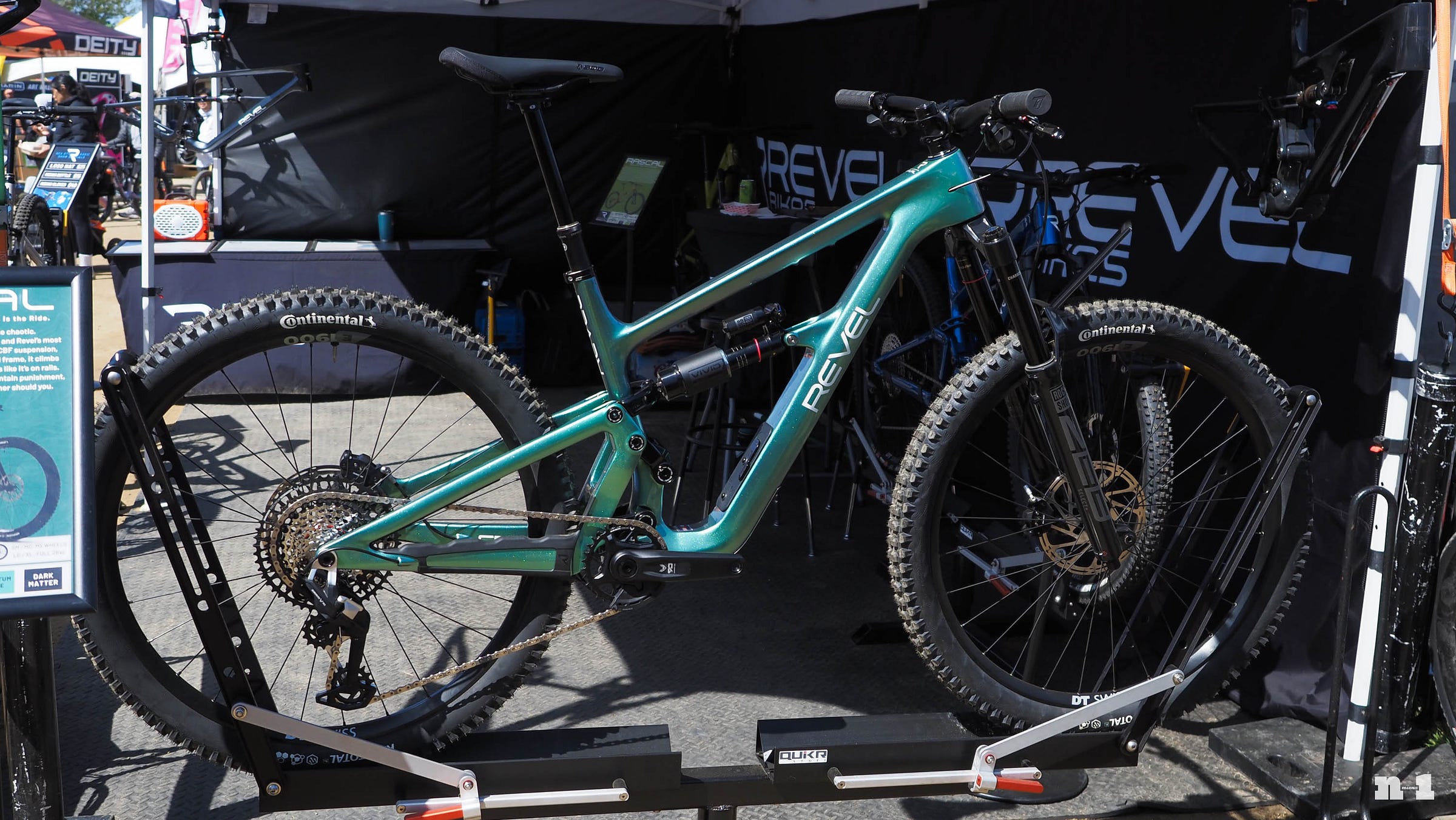
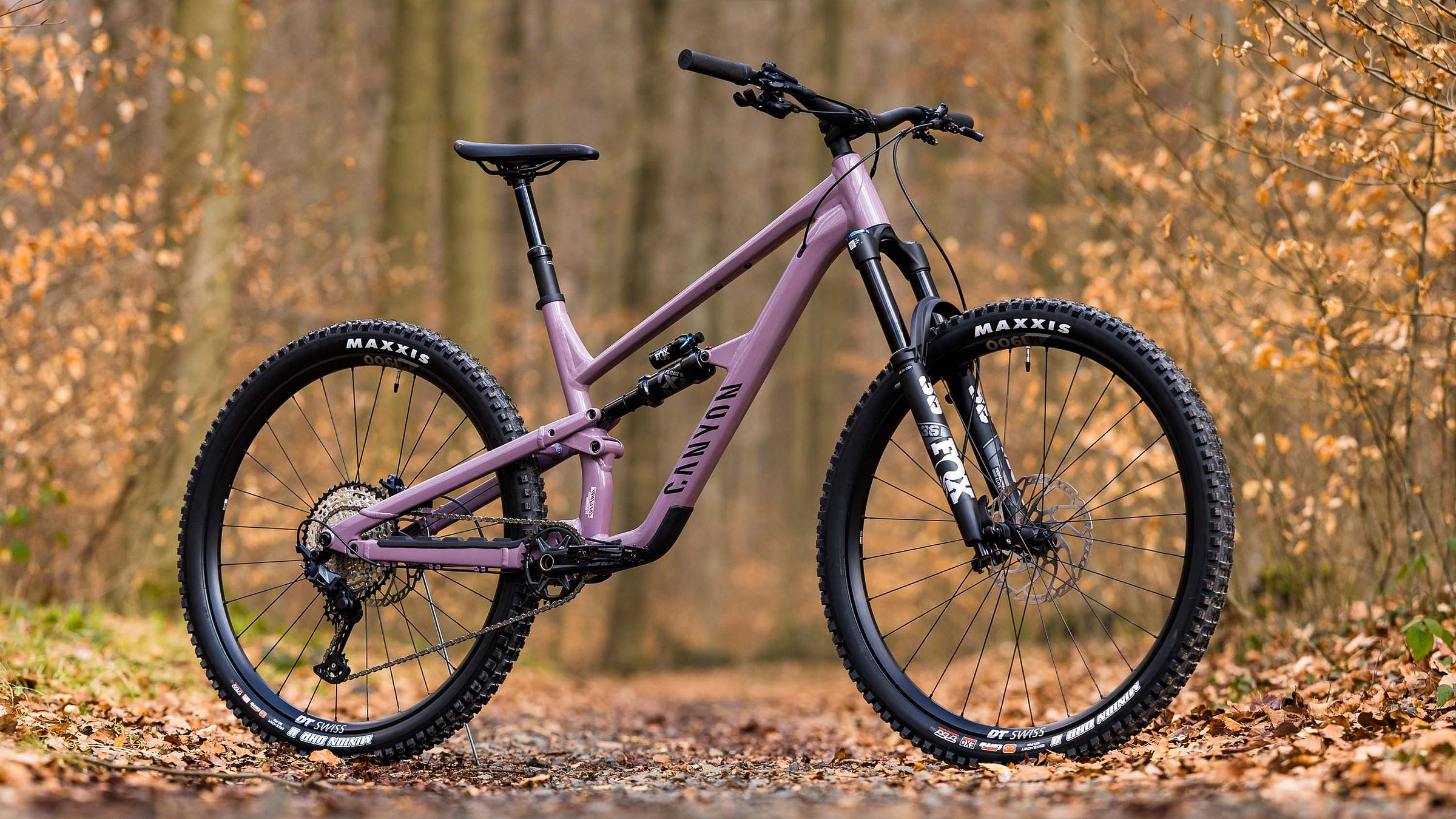



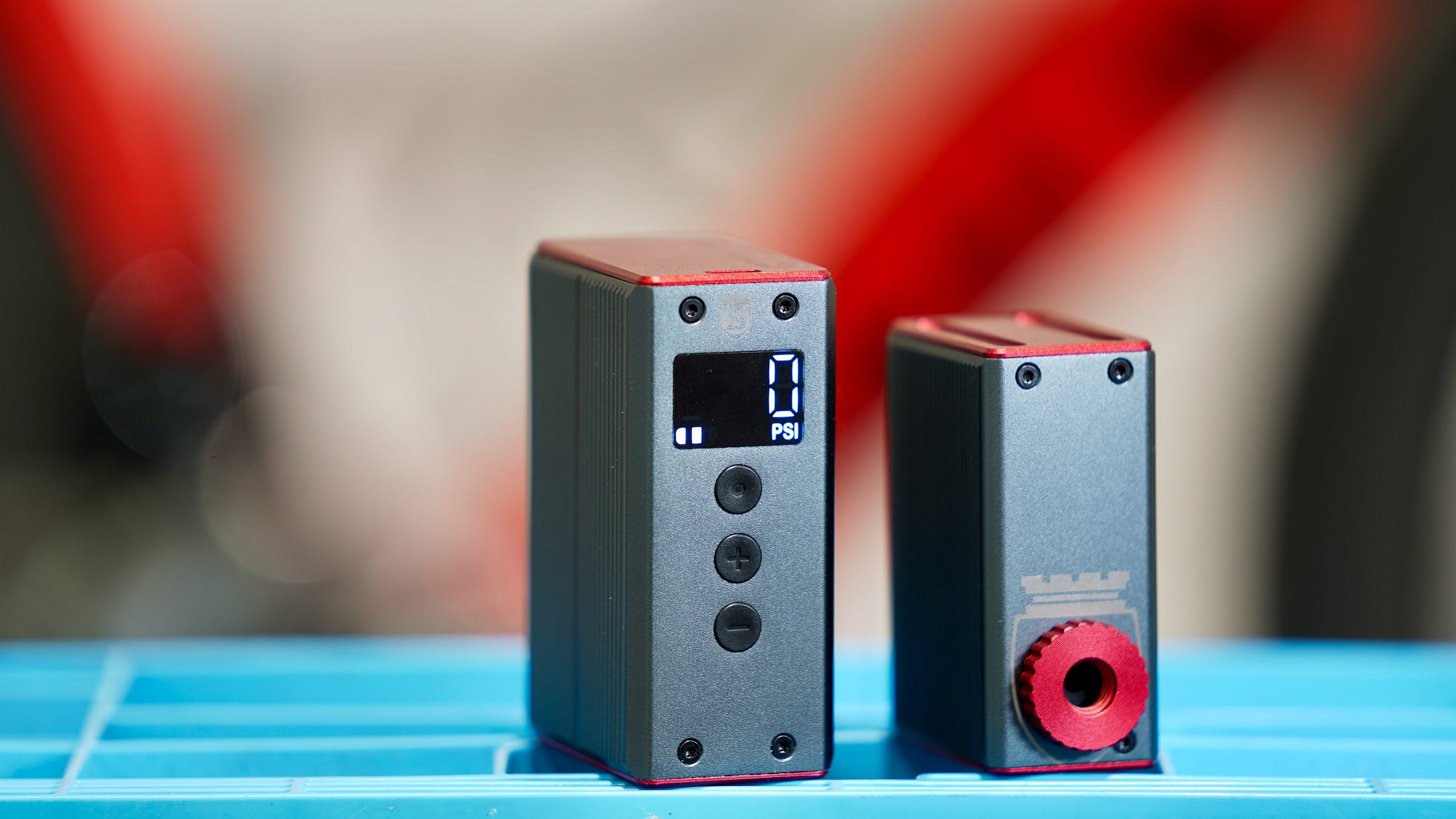
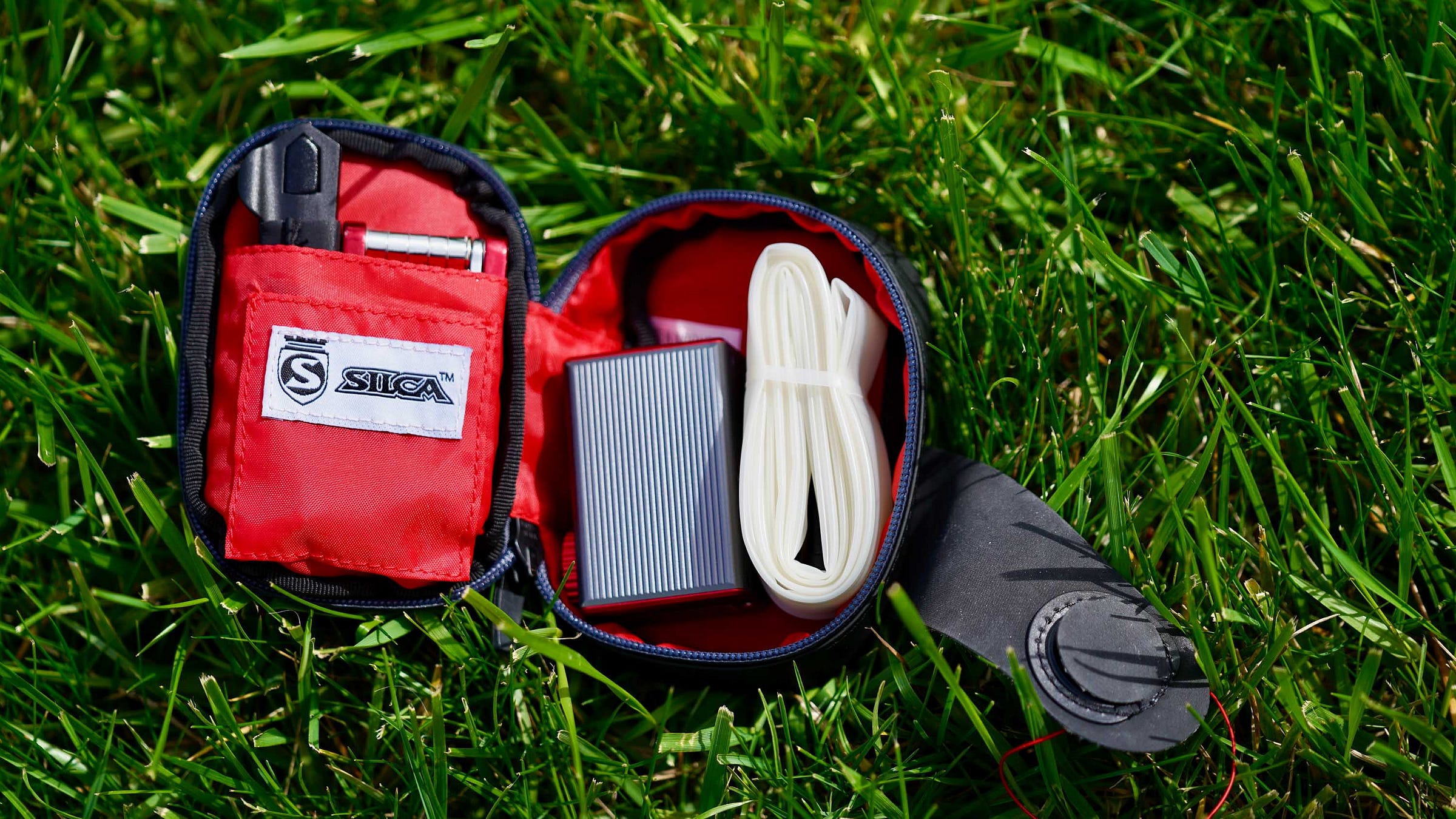
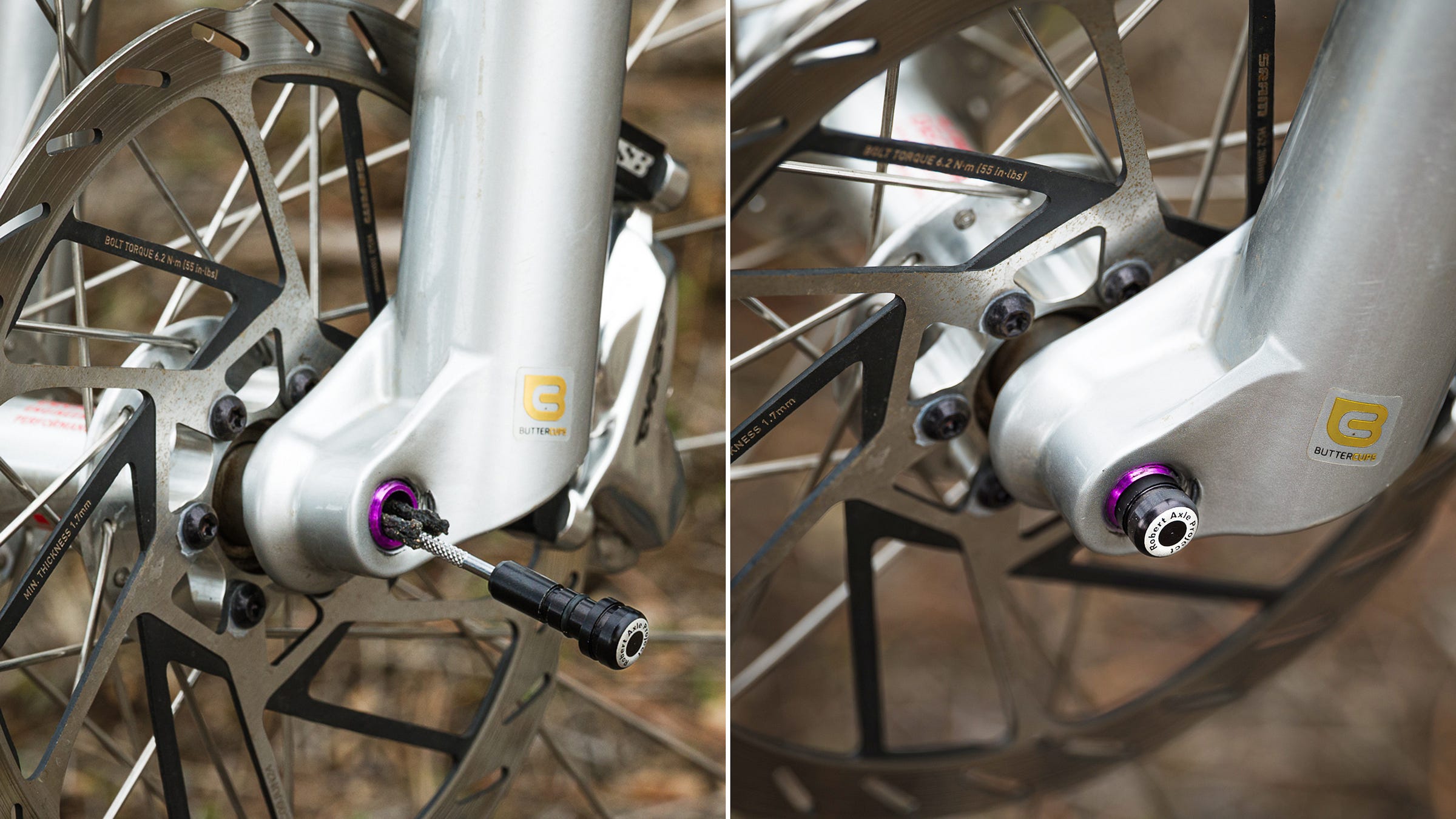

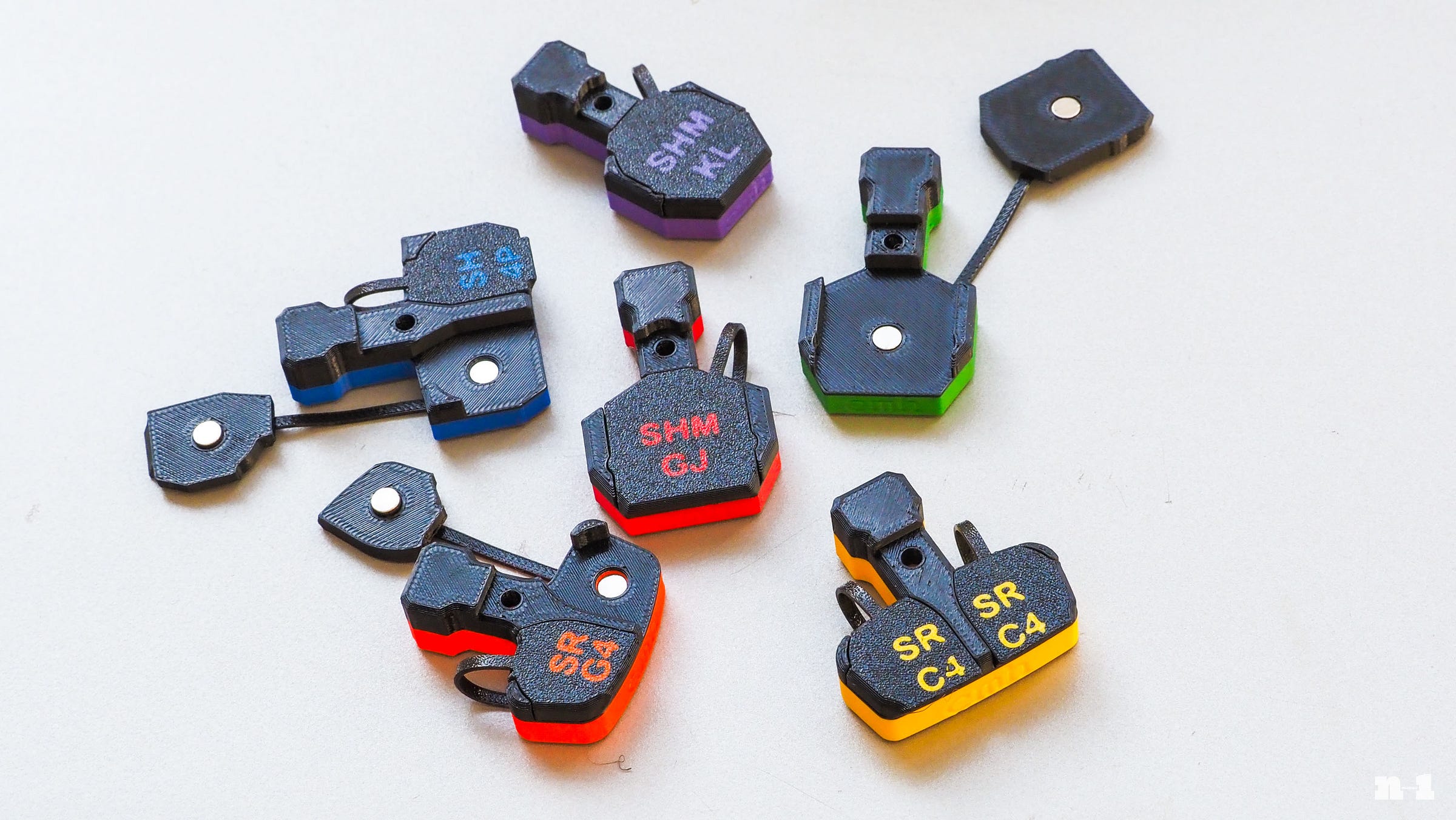

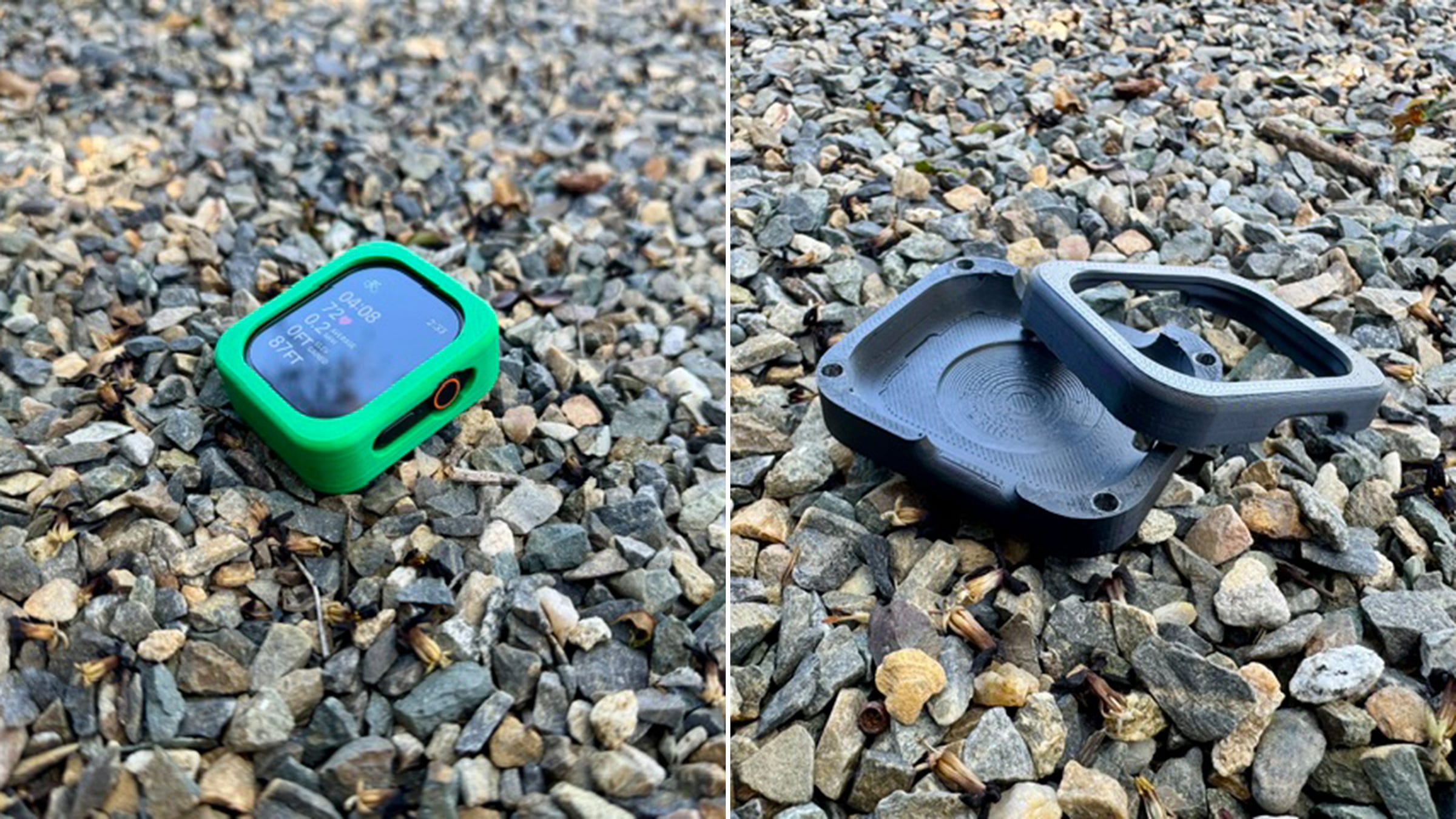
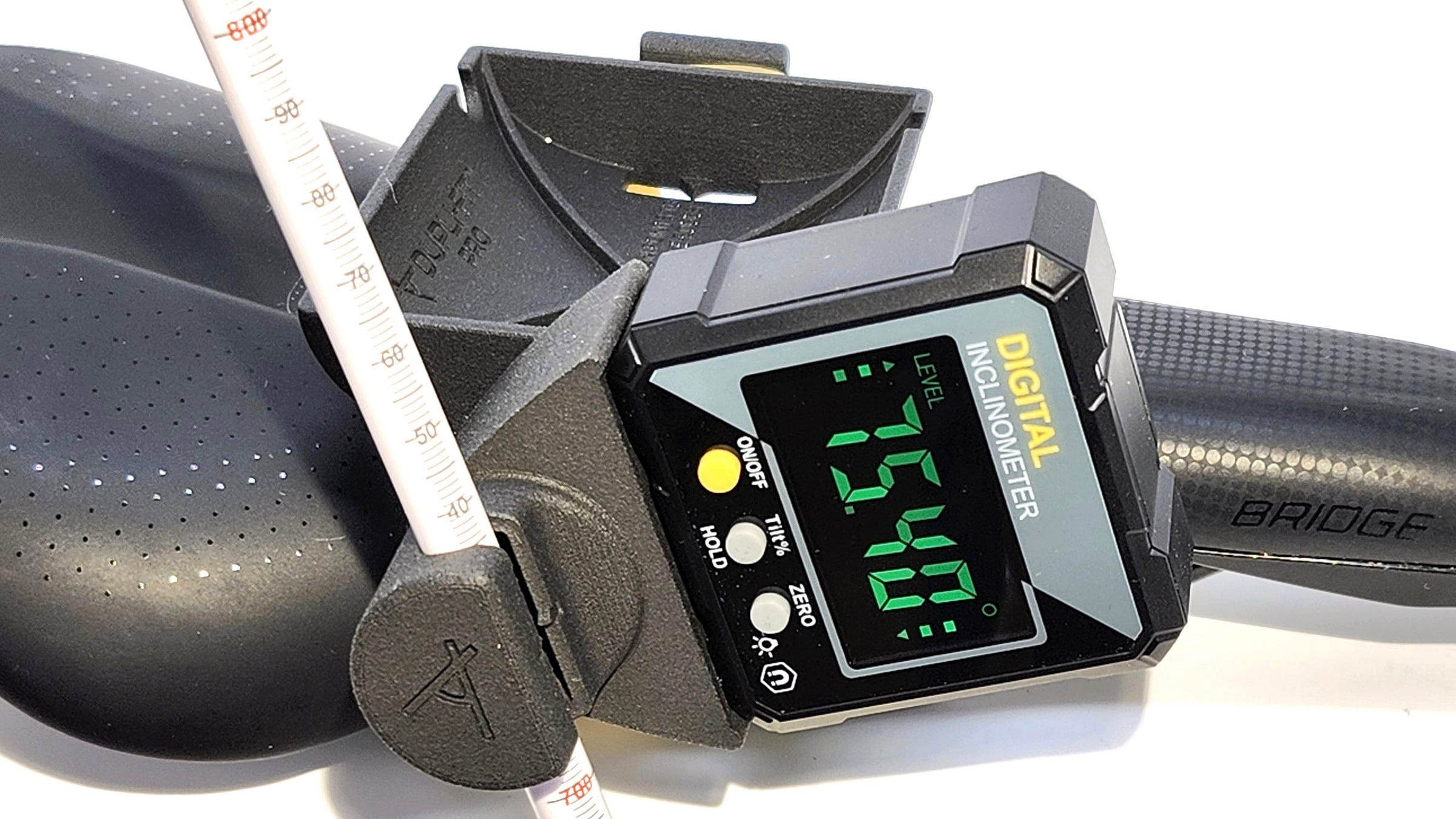

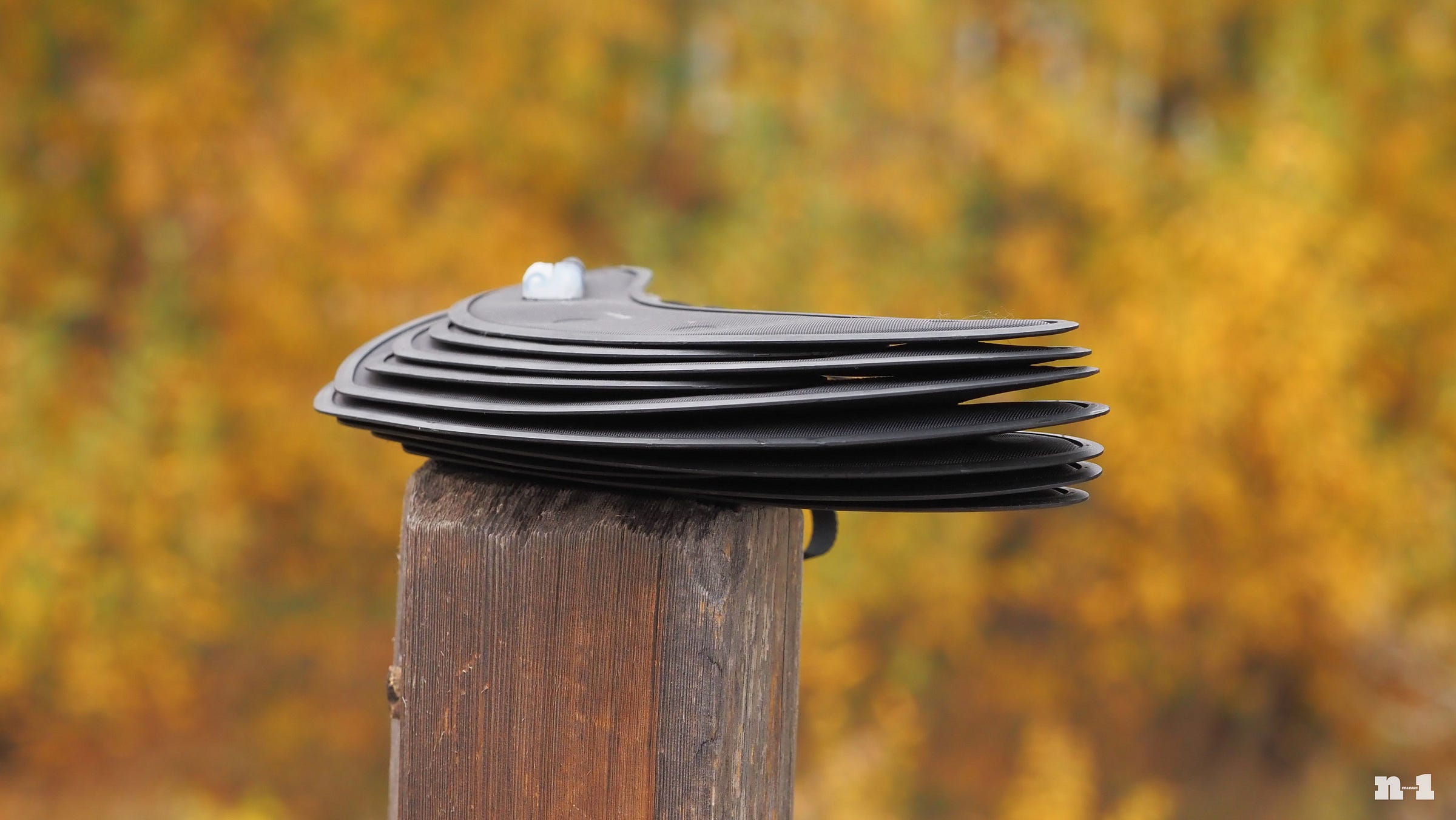


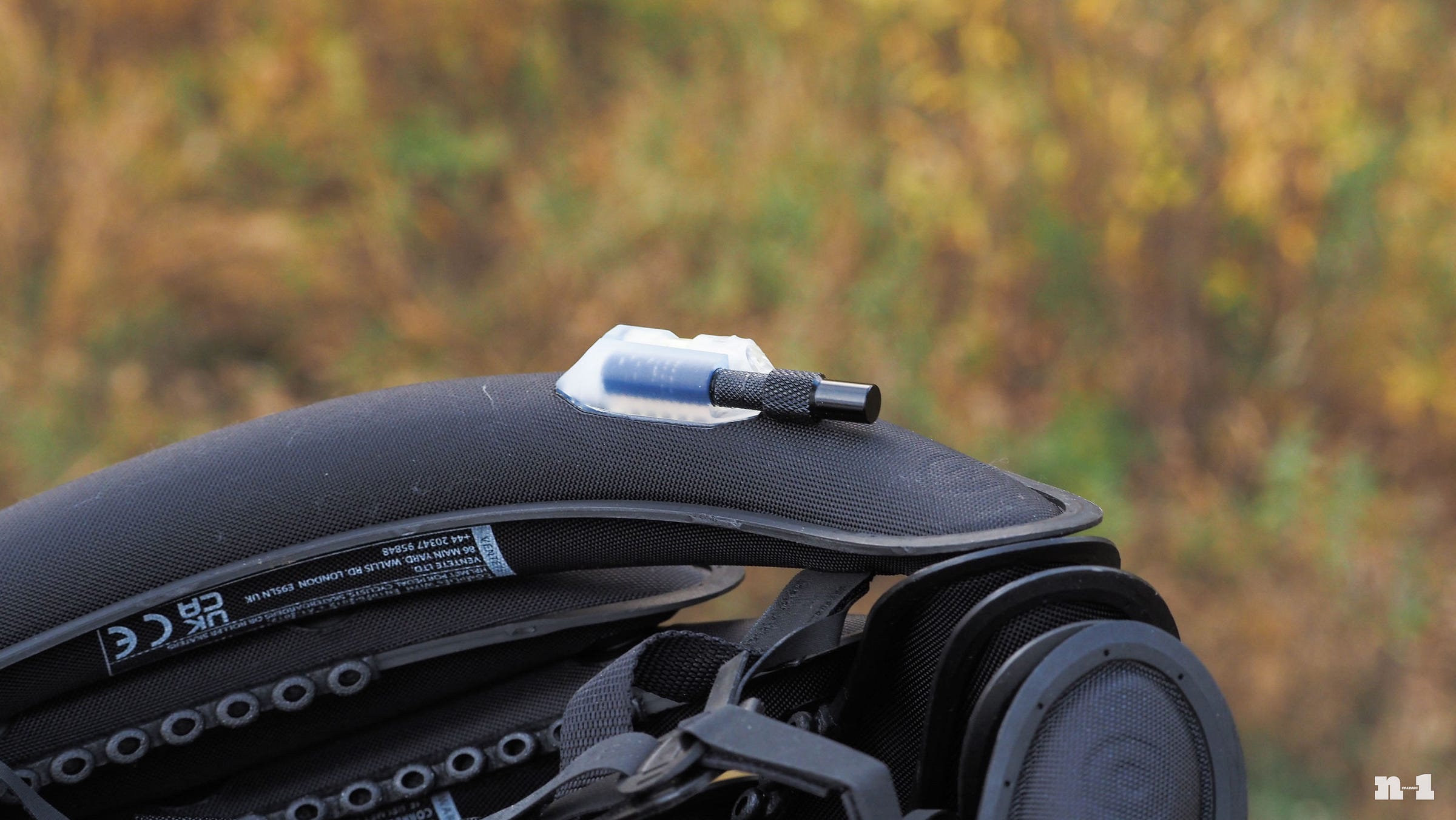

RE the Subaru biker airbag (which also protects pedestrians, I suppose, but yours is a bike newsletter...): 100% Yes! to the real issue being the driver&car but imo we should not forget better bike lanes. No, we're not invulnerable when in a bike lane (though many ride as if they are), but the variety of bike lane types and scarcity of them overall is a huge part of the bike/car problem imo.
It would be interesting to know the crash/death rate of cyclists in Western Europe, where helmets generally aren't required (I don't know all the countries' rules) and bike lanes are more prevalent.
And yeah, better driver ed wouldn't be bad, either. Thanks for the newsletter and all this.
To me, the key benefit of an electric pump is that you can fly with it. FAA rules do not allow compressed gas devices onboard airplanes.
That said, I guess enough riders have "grown up" with CO2 that full length frame pumps don't really have a market anymore. I mean, even Silca no longer makes a frame pump that ejects the plunger across the road when it slips out of your sweaty hand.